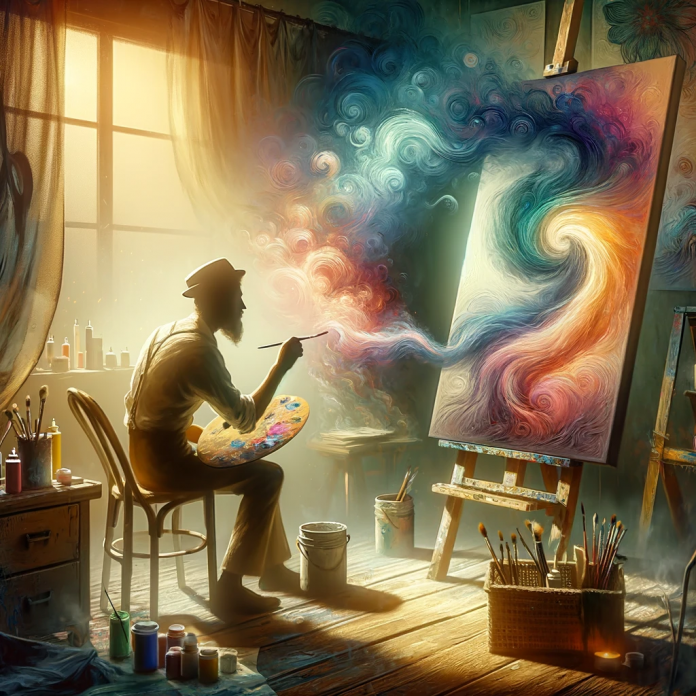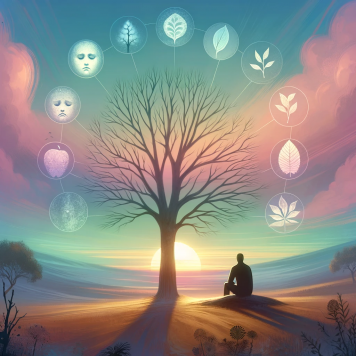Art has long been a medium for expressing emotions, and grief is no exception. The process of creating art can be therapeutic, offering a safe outlet for feelings that might otherwise be difficult to express. This article delves into the intricate relationship between grief and creativity, exploring how emotions can be channeled into art.
Understanding Grief and Its Impact
Grief is a complex emotion that can be triggered by various life events, including the loss of a loved one, the end of a relationship, or significant life changes. It is characterized by feelings of sadness, anger, guilt, and sometimes even relief. These feelings can be overwhelming and can affect individuals in different ways.
While grief is a natural response to loss, it can also be a catalyst for creativity. Many artists, writers, and musicians have used their grief as a source of inspiration, creating works of art that reflect their emotional state and help them process their feelings.
The Role of Art in Grief
Art can serve as a powerful tool for expressing grief. It provides a non-verbal outlet for emotions, allowing individuals to externalize their feelings in a tangible form. This can be particularly helpful for those who find it difficult to articulate their emotions verbally.
Creating art can also provide a sense of control during times of uncertainty. It allows individuals to take an active role in their healing process, rather than passively experiencing their grief.
Channeling Grief into Creativity
Channeling grief into creativity involves using art as a medium to express and process emotions. This can be done through various art forms, including painting, writing, music, and dance. The process can be cathartic, providing a sense of relief and helping individuals make sense of their experiences.
It's important to note that there is no right or wrong way to channel grief into creativity. The process is highly individual and can vary greatly from person to person. What matters most is that the individual finds a method that feels authentic and therapeutic to them.
Artistic Techniques for Expressing Grief
There are numerous artistic techniques that can be used to express grief. These can range from abstract painting to narrative writing, depending on the individual's preferences and skills.
For example, painting can be a powerful medium for expressing grief. The use of color, texture, and form can convey a wide range of emotions, providing a visual representation of the individual's inner world.
Writing, on the other hand, can offer a more structured approach to expressing grief. It allows individuals to articulate their feelings and experiences in a coherent narrative, which can be particularly helpful for those who find comfort in order and logic.
The Therapeutic Benefits of Art
Art therapy is a form of psychotherapy that uses art as a means of communication and expression. It has been found to have numerous benefits for individuals dealing with grief, including reduced stress, improved self-esteem, and increased self-awareness.
Creating art can also provide a sense of accomplishment, boosting the individual's confidence and self-efficacy. This can be particularly beneficial for those who feel helpless or overwhelmed by their grief.
Art as a Form of Self-Care
Art can also serve as a form of self-care, providing a healthy outlet for emotions and promoting mental well-being. It allows individuals to take time for themselves, focusing on their own needs and feelings rather than the expectations of others.
Furthermore, the act of creating can be meditative, helping individuals to stay present and focused. This can provide a welcome distraction from negative thoughts and feelings, promoting a sense of peace and tranquility.
Conclusion
Grief and creativity are intricately linked, with art serving as a powerful medium for expressing and processing emotions. Whether through painting, writing, music, or dance, the act of creating can provide a therapeutic outlet for grief, promoting healing and self-discovery.
While the process of channeling grief into creativity can be challenging, it can also be incredibly rewarding. It offers a unique opportunity to transform pain into beauty, creating a lasting testament to the individual's resilience and strength.


-banner.png)





